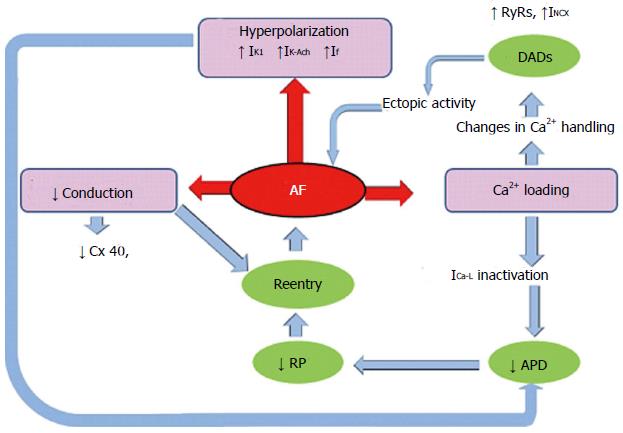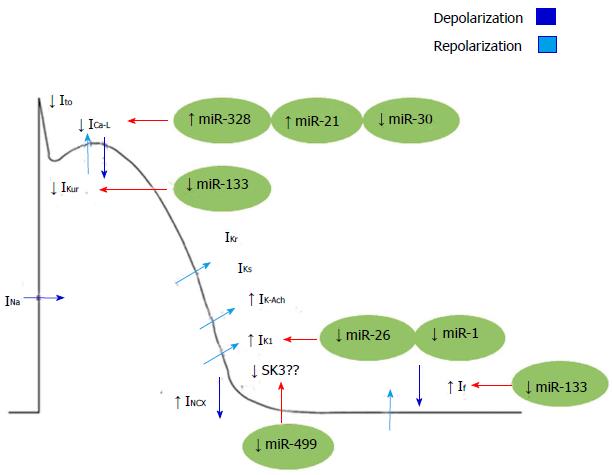Copyright
©The Author(s) 2015.
Figure 1 Mechanisms of atrial fibrillation.
Cytotoxic overloading of Ca2+ occurs by a rapid atrial rate. As a result, this acts as a mechanism of cell protection via the inactivation of L-type Ca2+ current (ICa-L), which in turn reduces the action potential duration (APD) and this consequently shortens the refractory period (RP). This overloading of Ca2+ also contributes to an abnormal function of ryanodine receptor channels (RyRs) and intensifies the inward Na+-Ca2+-exchange current (INCX), leading to delayed afterpolarizations (DADs) and ectopic activity. In addition, AF produces hyperpolarization due to increased ICa-L, which increases the inward rectifier current (IK1) and acetylcholine-regulated K+ current (IK-Ach). This also reduces APD and promotes conduction by decreasing of connexin-40 (Cx40).
Figure 2 Mechanisms of electrical remodelling in atrial fibrillation regulated by microRNAs.
INa: Inward sodium current; IK1: Inward rectified K+ current; Ito: Transient outward potassium currents; ICa-L: Inactivation of L-type Ca2+ current; IKur: Ultrarapid delayed rectifier K+ channel; IKs: Slow delayed rectifier potassium channel; IK-Ach: Acetylcholine-activated inward-rectifing potassium channel; INCX: Inward Na+-Ca2+-exchange current; SK3: Small conductance calcium-activated potassium channel 3; If: Funny current.
- Citation: Vilches JM, Franco D, Aránega AE. Contribution of miRNAs to ion-channel remodelling in atrial fibrillation. World J Hypertens 2015; 5(1): 6-13
- URL: https://www.wjgnet.com/2220-3168/full/v5/i1/6.htm
- DOI: https://dx.doi.org/10.5494/wjh.v5.i1.6










